The Green Mamba, with its vibrant coloration and graceful movements, is a striking snake native to the forests and woodlands of sub-Saharan Africa. Renowned for its agility and arboreal lifestyle, this venomous serpent captivates both scientists and nature enthusiasts.
The green mamba is a snake with long, thin scales and a small, coffin-shaped head. Bright green scales, placed like paving stones, cover darker skin. The green mamba’s belly is yellow to pale green in color. Green mambas have small, fixed fangs at the front of their jaws as well. These snakes are highly poisonous. For this species, there have been instances of fatalities occurring in as little as 30 minutes.
Green mambas enjoy thick, dark vegetation around the shore. They live in trees (unlike their black mamba cousins) in lowland tropical rainforests, coastal bushlands, dunes, and montane forests.
Green Mamba: Species Profile
COMMON NAME: Green Mamba
SWAHILI NAME: Hongo Mashariki or Koboko Kijani
SCIENTIFIC NAME: Dendroaspis angusticeps
TYPE: Reptile
FOOD: The Green Mamba primarily feeds on small vertebrates, including birds, rodents, and occasionally other reptiles. It is an agile and swift predator, capable of capturing its prey with great precision.
HABITAT: Green Mambas inhabit the tropical rainforests and woodlands of sub-Saharan Africa. They are commonly found in countries such as Kenya, Tanzania, and Uganda. These snakes prefer dense vegetation and are often seen in the tree canopies or near forest edges.
SIZE: The Green Mamba is a slender and moderately sized snake. Adult individuals can reach lengths between 1.8 to 2.5 meters (6 to 8 feet). Females tend to be slightly larger than males.
AVERAGE LIFE SPAN IN THE NATURAL HABITAT: In their natural habitat, Green Mambas have an average life span of 10 to 15 years. However, in captivity, with proper care and management, they can live considerably longer.
ACTIVE: Green Mambas are diurnal, which means they are active during the day. They are agile climbers and spend a significant amount of time in trees, where they hunt for prey and seek refuge.
GESTATION PERIOD: The gestation period of Green Mambas lasts for several months, typically around 3 to 4 months. The female lays a clutch of eggs and incubates them until they hatch.
WEIGHT: The weight of Green Mambas varies depending on their size and age. Adult specimens generally weigh between 700 grams to 1.5 kilograms (1.5 to 3.3 pounds).
SIZE COMPARISON TO A 6-FT MAN: The length of a Green Mamba, ranging from 1.8 to 2.5 meters (6 to 8 feet), exceeds the average height of a 6-ft man. However, it’s important to note that the comparison is based on length rather than height.
Physical Features and Adaptations:
The Green Mamba showcases a stunning shade of vibrant green, which serves as effective camouflage among the lush foliage it inhabits. It possesses a slender and elongated body, reaching lengths of up to 2 meters (6.5 feet). Its scales are smooth and glossy, adding to its exquisite appearance.
Habitat and Distribution:
Green Mambas are primarily found in the forests and woodlands of East Africa, including countries such as Kenya, Tanzania, Uganda, and parts of Central Africa. They are highly arboreal, spending much of their time in trees and shrubs, where they hunt and seek refuge.
Behavior and Hunting Strategies:
Arboreal Lifestyle:
Green Mambas are adept climbers and spend a significant portion of their lives in the trees. Their long and slender bodies, coupled with their prehensile tails and powerful muscles, allow them to navigate through the branches with agility and precision.
Venom and Prey:
Like other members of the mamba family, the Green Mamba possesses potent venom. However, it is generally considered less dangerous to humans compared to its relatives, such as the Black Mamba. Green Mambas primarily feed on small mammals, birds, and occasionally reptiles, which they immobilize with their venom.
Ecological Significance:
As an arboreal predator, the Green Mamba plays a vital role in controlling populations of its prey species. By preying on small mammals and birds, it helps maintain ecological balance within its habitat. Additionally, as an indicator species, the presence and abundance of Green Mambas can reflect the overall health of the forest ecosystems they inhabit.
Conservation Status and Threats:
The Green Mamba is currently listed as a species of least concern on the IUCN Red List due to its relatively wide distribution and adaptable nature. However, deforestation, habitat degradation, and illegal collection for the pet trade pose potential threats to their populations. Conservation efforts are essential to ensure the long-term survival of this enchanting snake.
Cultural Significance:
The Green Mamba has also found its place in African folklore and cultural narratives. It is often portrayed as a symbol of elegance, agility, and wisdom, captivating the imagination of local communities and contributing to the rich tapestry of African mythology.
Dendroaspis angusticeps
The Dendroaspis angusticeps (Green Mamba), with its emerald hue and arboreal prowess, represents a remarkable species thriving in the African rainforests. By appreciating its unique beauty, understanding its ecological significance, and promoting conservation efforts, we can ensure the preservation of this enchanting snake for future generations to admire and cherish.
Green Mamba Adaptations:
The green mamba (Dendroaspis angusticeps) is a captivating snake known for its striking coloration and impressive speed. This arboreal species inhabits the lush forests and woodlands of certain regions in Africa.
1. Coloration and Camouflage
One of the most prominent features of the green mamba is its vibrant green color, which helps it blend seamlessly with the foliage of its forested environment. This exceptional camouflage allows the snake to remain concealed from potential threats and unsuspecting prey. Its bright green scales serve as a protective adaptation, enabling it to blend into the lush vegetation and avoid detection.
2. Slender and Agile Body
The green mamba possesses a slender and elongated body, perfectly adapted for its arboreal lifestyle. Its streamlined physique allows for swift and agile movement through the trees, making it an efficient and agile predator. This adaptation enables the snake to navigate the dense vegetation and strike with precision when hunting its prey.
3. Venomous Bite
Like other mambas, the green mamba possesses venom that it uses to subdue its prey. Its venom is neurotoxic, affecting the nervous system of its victims. The green mamba’s venom contains potent toxins that immobilize its prey quickly, allowing the snake to consume it without undue struggle. This adaptation ensures the snake’s success as an apex predator within its habitat.
4. Excellent Vision
The green mamba has exceptional vision, allowing it to accurately locate and target its prey. Its eyes are large and positioned on the front of its head, providing binocular vision and depth perception. This visual acuity enables the snake to accurately judge distances and strike with precision, even in the densest vegetation.
5. Sensory Perception
In addition to its keen eyesight, the green mamba possesses other sensory adaptations that aid in its hunting success. It has a forked tongue that it flicks in the air, collecting scent particles from the environment. The snake then retracts its tongue and transfers these particles to its Jacobson’s organ, located in the roof of its mouth. This organ helps the snake detect and analyze scents, assisting in locating prey and potential mates.
6. Speed and Agility
The green mamba is known for its remarkable speed and agility, allowing it to quickly pursue and capture its prey. It can swiftly move through the branches and navigate the treetops with ease. Its long and powerful body combined with its muscular strength enables rapid acceleration, ensuring successful hunting endeavors.
7. Arboreal Adaptations
The green mamba’s adaptations are well-suited to its arboreal lifestyle. Its prehensile tail provides additional support while maneuvering through the trees, enhancing its agility and balance. The snake’s ability to climb, glide, and leap from branch to branch with precision makes it a formidable predator in its arboreal habitat.
Unveiling the Remarkable Features of a Vibrant Serpent
The green mamba’s adaptations highlight its remarkable ability to thrive in its forested environment. From its vibrant green coloration for camouflage to its venomous bite and exceptional speed and agility, this snake is a true marvel of evolution. By understanding and appreciating these adaptations, we gain a deeper insight into the fascinating world of the green mamba.
Where to See the Green Mamba in Tanzania:
Tanzania, with its diverse ecosystems and rich biodiversity, offers a fantastic opportunity for wildlife enthusiasts and herpetology enthusiasts to witness the awe-inspiring green mamba (Dendroaspis angusticeps) in its natural habitat. Here are some key locations where you can potentially encounter this remarkable serpent in Tanzania.
1. Eastern Arc Mountains
The Eastern Arc Mountains, including the Uluguru and Usambara Mountains, are known for their lush rainforests and diverse wildlife. These mountain ranges provide an ideal habitat for the green mamba. Exploring the trails and dense vegetation of these mountains increases your chances of spotting this elusive snake. Hiring a knowledgeable guide familiar with the region can greatly enhance your green mamba sighting opportunities.
2. Coastal Forests
Tanzania’s coastal forests, such as the Pugu and Ruvu Forest Reserves, are home to a variety of reptiles and offer a suitable habitat for the green mamba. These forests provide a unique blend of coastal and tropical ecosystems, creating an ideal environment for this arboreal serpent. Exploring the forest trails and keeping a keen eye on the tree canopies may reward you with a sighting of the green mamba.
3. Selous Game Reserve
The vast Selous Game Reserve is one of Tanzania’s hidden gems, known for its abundant wildlife and diverse habitats. While the reserve is primarily famous for its large mammals, it is also home to numerous reptiles, including the green mamba. Exploring the reserve’s riverine forests and woodland areas may offer an opportunity to encounter this fascinating snake alongside other incredible wildlife.
4. Southern Highlands
The Southern Highlands of Tanzania, including areas like the Udzungwa Mountains and Ruaha National Park, boast breathtaking landscapes and unique biodiversity. These regions feature dense forests and woodlands, providing suitable habitats for the green mamba. Embarking on hikes or guided walks in these areas offers a chance to explore the serpent’s natural environment and potentially witness its graceful movements.
5. Meserani Snake Park
Located near Arusha, the Meserani Snake Park is a renowned attraction that offers visitors the opportunity to learn about and observe a variety of snake species, including the green mamba. The park provides a controlled environment where visitors can safely witness the snake’s beauty and learn about its unique adaptations. Guided tours and informative presentations provide insights into the green mamba’s behavior, habitat, and conservation.
Exploring the Habitat of a Remarkable Serpent
Tanzania’s diverse landscapes provide ample opportunities to witness the green mamba in its natural habitat. From the Eastern Arc Mountains to the coastal forests, Selous Game Reserve, and the Southern Highlands, these regions offer the potential to observe the remarkable green mamba in its element. As you embark on your adventure, remember to prioritize safety, respect the environment, and seek guidance from experienced professionals to ensure a rewarding and responsible wildlife experience.
Green Mamba Safari Tips:
Embarking on a green mamba safari in Tanzania is a thrilling adventure for nature enthusiasts and herpetology enthusiasts alike. The green mamba (Dendroaspis angusticeps) is a fascinating snake known for its vibrant coloration and arboreal nature. To ensure a safe and enriching experience, here are some essential tips to consider when encountering the green mamba in its natural habitat.
1. Seek Local Expertise
When planning a green mamba safari, it is highly recommended to enlist the services of local guides or wildlife experts who are knowledgeable about the behavior, habitat, and conservation of the green mamba. These experts possess valuable insights and can help you locate and identify the snake while ensuring your safety and the well-being of the snake.
2. Choose the Right Time and Place
The green mamba is most active during the day, especially in the early morning and late afternoon when temperatures are moderate. Plan your safari during these times to increase your chances of encountering the snake. Additionally, focus on exploring areas known for supporting green mamba populations, such as coastal forests, lowland regions, and Eastern Arc Mountains.
3. Observe from a Safe Distance
The green mamba is a venomous snake and should be observed with caution and from a safe distance. Maintain a respectful distance of at least several meters and avoid any attempts to approach, touch, or handle the snake. Admire its beauty and behavior from afar, using binoculars or a telephoto lens to enhance your viewing experience.
4. Stay Quiet and Patient
When searching for the green mamba, it is essential to remain calm, quiet, and patient. The snake is highly elusive and may retreat or remain motionless to avoid detection. Take your time to carefully scan the surrounding vegetation, focusing on tree canopies and areas with ample foliage where the green mamba may seek refuge or hunt for prey.
5. Respect the Snake and its Habitat
Responsible ecotourism and wildlife ethics should guide your actions during a green mamba safari. Respect the snake and its natural habitat by avoiding any disruptive behaviors or actions that may harm the snake or its environment. Avoid littering, stay on designated paths or trails, and adhere to any guidelines or instructions provided by your guide or local authorities.
6. Learn about Snake Identification
Enhance your green mamba safari experience by familiarizing yourself with the distinguishing features and characteristics of the snake. Educate yourself about its vibrant green coloration, slender body shape, and other key traits. This knowledge will enable you to appreciate the snake’s adaptations and identify it accurately during your encounters.
7. Capture Memories Responsibly
Photographing or filming the green mamba can be an incredible way to preserve your safari memories. However, ensure that your actions do not compromise the safety of the snake or its habitat. Use zoom lenses or telephoto lenses to capture close-up shots while maintaining a respectful distance. Avoid using flash photography as it may startle or disturb the snake.
8. Embrace Wildlife Conservation
Engage in activities that contribute to the conservation of the green mamba and its ecosystem. Support local conservation organizations and initiatives working towards the protection of snakes and their habitats. By promoting sustainable tourism and responsible behavior, you can actively contribute to the long-term preservation of these incredible reptiles.
A Guide to Safely and Responsibly Encountering the Elusive Serpent
A green mamba safari in Tanzania offers a unique opportunity to witness the beauty and grace of this elusive serpent. By following these tips, seeking local expertise, and respecting the snake and its environment, you can have a safe, enriching, and memorable experience while ensuring the well-being and conservation.
Frequently Asked Questions about the Green Mamba:
- What is the Green Mamba?
The green mamba (Dendroaspis angusticeps) is a highly venomous snake species found in certain regions of Africa, including Tanzania. It is known for its striking green coloration, slender body, and arboreal nature. The green mamba is a fast and agile snake, adapted for life in trees. - Is the Green Mamba Dangerous?
Yes, the green mamba is considered highly dangerous due to its potent venom. While it is generally shy and prefers to avoid confrontations, if threatened or cornered, it may strike in self-defense. It is essential to maintain a safe distance and respect its space when encountering the green mamba in the wild. - Where can I find the Green Mamba in Tanzania?
The green mamba can be found in various habitats in Tanzania, including coastal forests, lowland areas, Eastern Arc Mountains, and even unexpected locations like Serengeti National Park. Seeking the guidance of local experts or visiting attractions like the Meserani Snake Park near Arusha can increase your chances of encountering this fascinating snake. - What should I do if I encounter a Green Mamba?
If you encounter a green mamba, it is crucial to remain calm and maintain a safe distance. Do not attempt to touch or handle the snake. Slowly back away and allow the snake to retreat. Observing it from a distance is the safest way to appreciate its beauty without putting yourself at risk. - How venomous is the Green Mamba?
The green mamba possesses a potent neurotoxic venom that affects the nervous system. Its venom can cause severe symptoms and, if untreated, may be fatal. Prompt medical attention is necessary if bitten by a green mamba or any venomous snake. - Are there any precautions I should take during a Green Mamba safari?
When embarking on a green mamba safari, it is important to prioritize safety. Stay on designated paths or trails, avoid walking through tall grass or dense vegetation, and wear appropriate footwear to protect against snake bites. Following the guidance of experienced guides and practicing responsible wildlife viewing habits is essential. - Can I keep a Green Mamba as a pet?
Keeping a green mamba as a pet is not recommended due to their highly venomous nature and specific care requirements. They are best appreciated in their natural habitat under controlled and guided circumstances. - Are Green Mambas endangered?
The green mamba is currently listed as a species of least concern on the International Union for Conservation of Nature (IUCN) Red List. However, habitat loss and degradation pose ongoing threats to their populations. Conservation efforts aimed at protecting their natural habitats and promoting sustainable practices are crucial for their long-term survival.

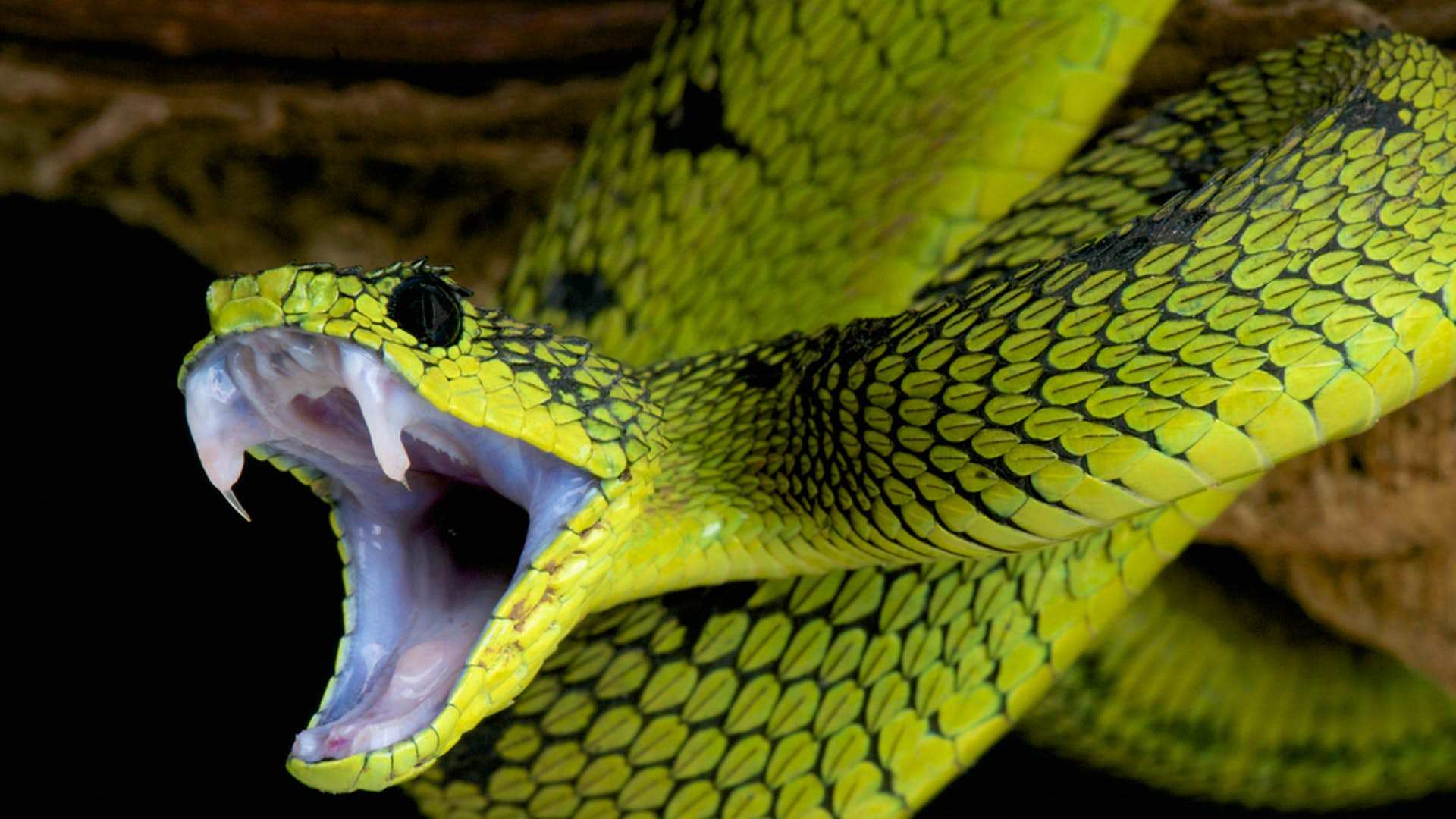

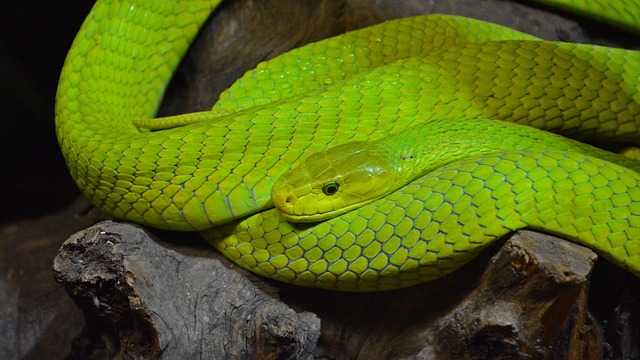
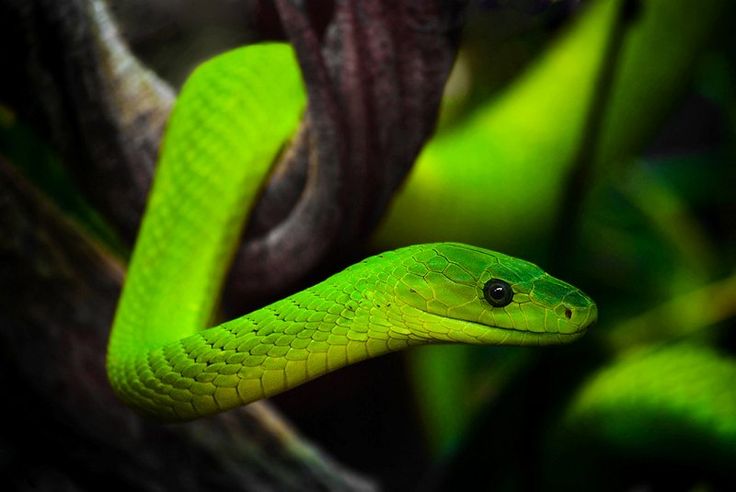
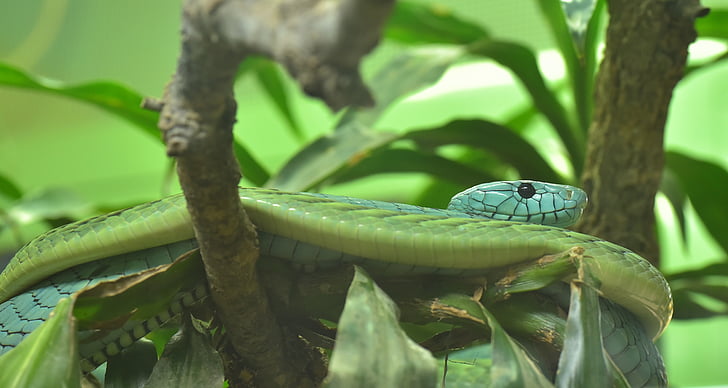
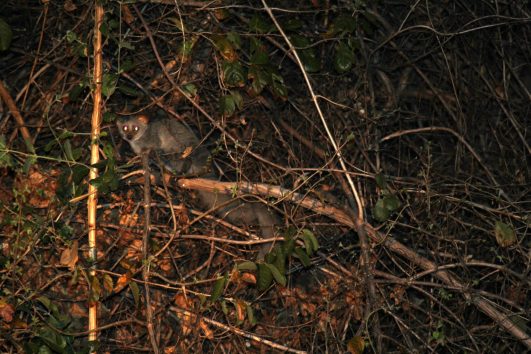
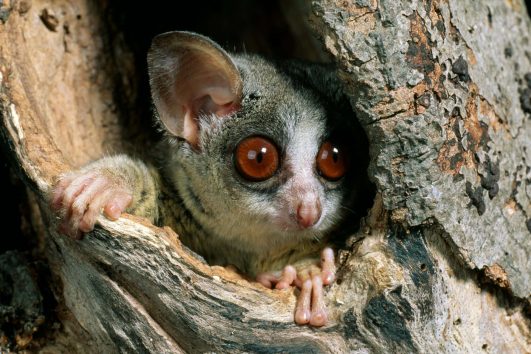
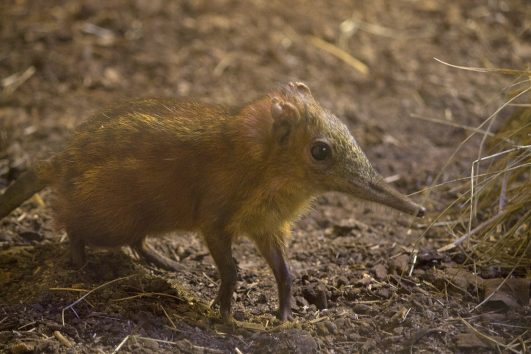
Tour Reviews
There are no reviews yet.
Leave a Review